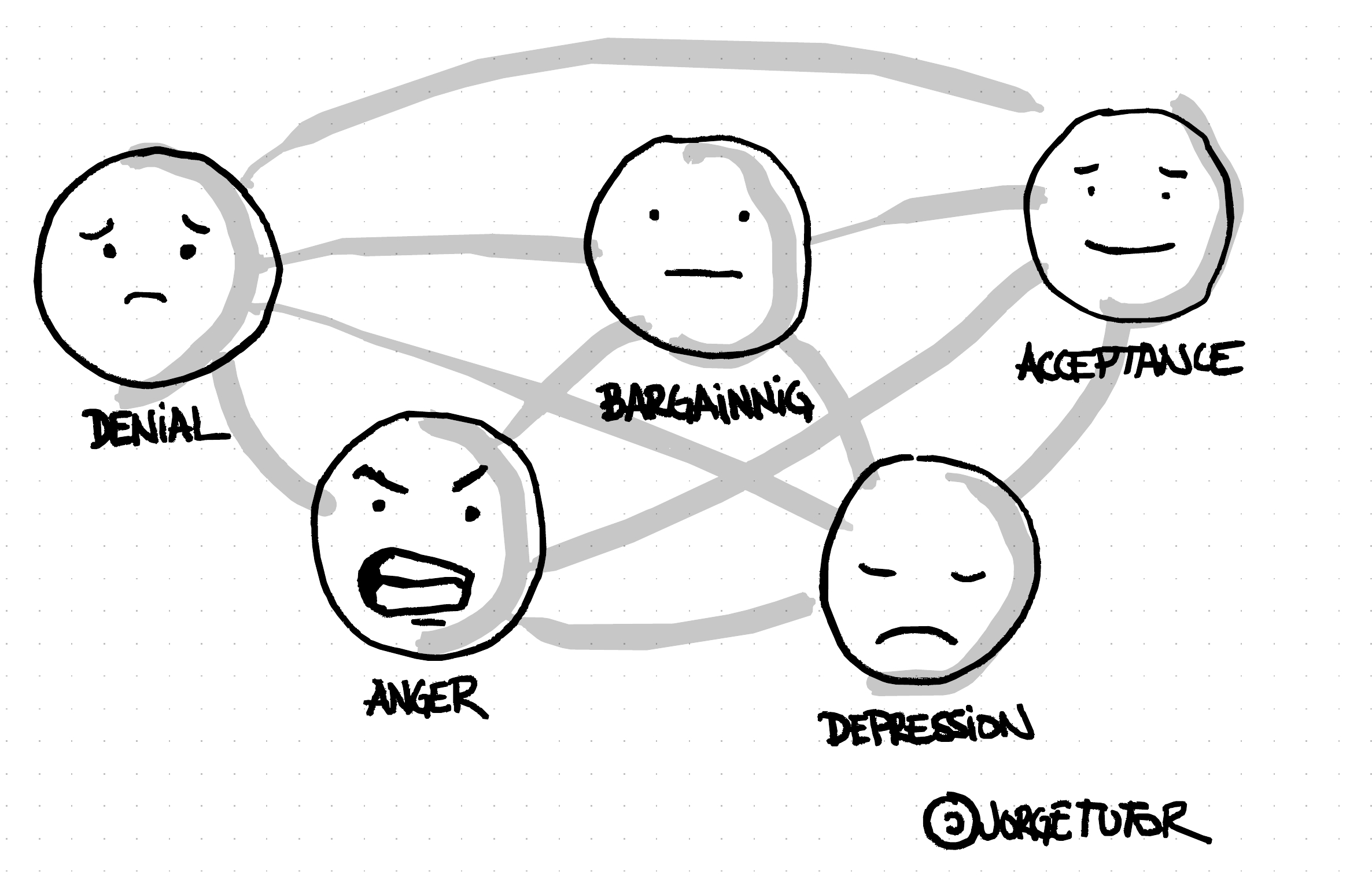Change is hard. Whether it’s a company restructure, a new process, or a leadership shift, resistance is natural. The Kübler-Ross Change Curve, originally created to explain grief, helps us understand how teams emotionally process change.
Psychiatrist Elisabeth Kübler-Ross first introduced this model in 1969 to describe how people cope with grief and loss. Over time, businesses adapted it to help understand employee reactions to change. While this framework provides a useful lens, it has faced criticism for being too rigid and oversimplified. Change isn’t always a step-by-step process—people may skip stages, move backward, or experience multiple emotions at once. That said, it remains a helpful tool for leaders navigating transitions.

The Five Stages of Change in Organizations
Denial: “This won’t affect me.” Employees may initially ignore the change, believing it won’t happen or that they can continue as usual. You might hear, “This is just another leadership trend—it’ll blow over.”
Anger: “Why is this happening?” Frustration builds as reality sets in. People may blame leadership, feel unfairly treated, or push back against the new direction. Resistance often peaks here.
Bargaining: “Can we do it another way?” Employees try to regain control, suggesting alternative approaches or seeking compromises to delay or soften the impact of change.
Depression: “This is overwhelming.” Morale may drop as employees realize the change is inevitable. Anxiety, uncertainty, and disengagement can surface, impacting productivity.
Acceptance: “Let’s make this work.” Over time, employees start to adjust, find new ways to succeed, and embrace the change. The energy shifts from resistance to possibility.
How Leaders Can Make Change Easier
But here’s the key: Change isn’t linear. People experience these emotions at different speeds, and some may never fully reach acceptance. So how do we ease the transition?
Tips for leaders:
- Transparent Communication: Share the “why” early to build trust and reduce uncertainty. Lack of clarity fuels fear.
- Emotional Acknowledgment: Change is exciting for leadership but scary for employees. Validate their emotions and provide reassurance.
- Personalized Support: Everyone processes change differently. Foster one-on-one check-ins to help individuals adapt at their own pace.
- Empower Change Champions: Identify and equip key team members to advocate for the transition, offering peer-to-peer support.
At its core, change isn’t just about strategy—it’s about emotions. The better we understand our teams, the smoother the transition will be.
How have you navigated major changes in your organization? What worked (or didn’t work)?